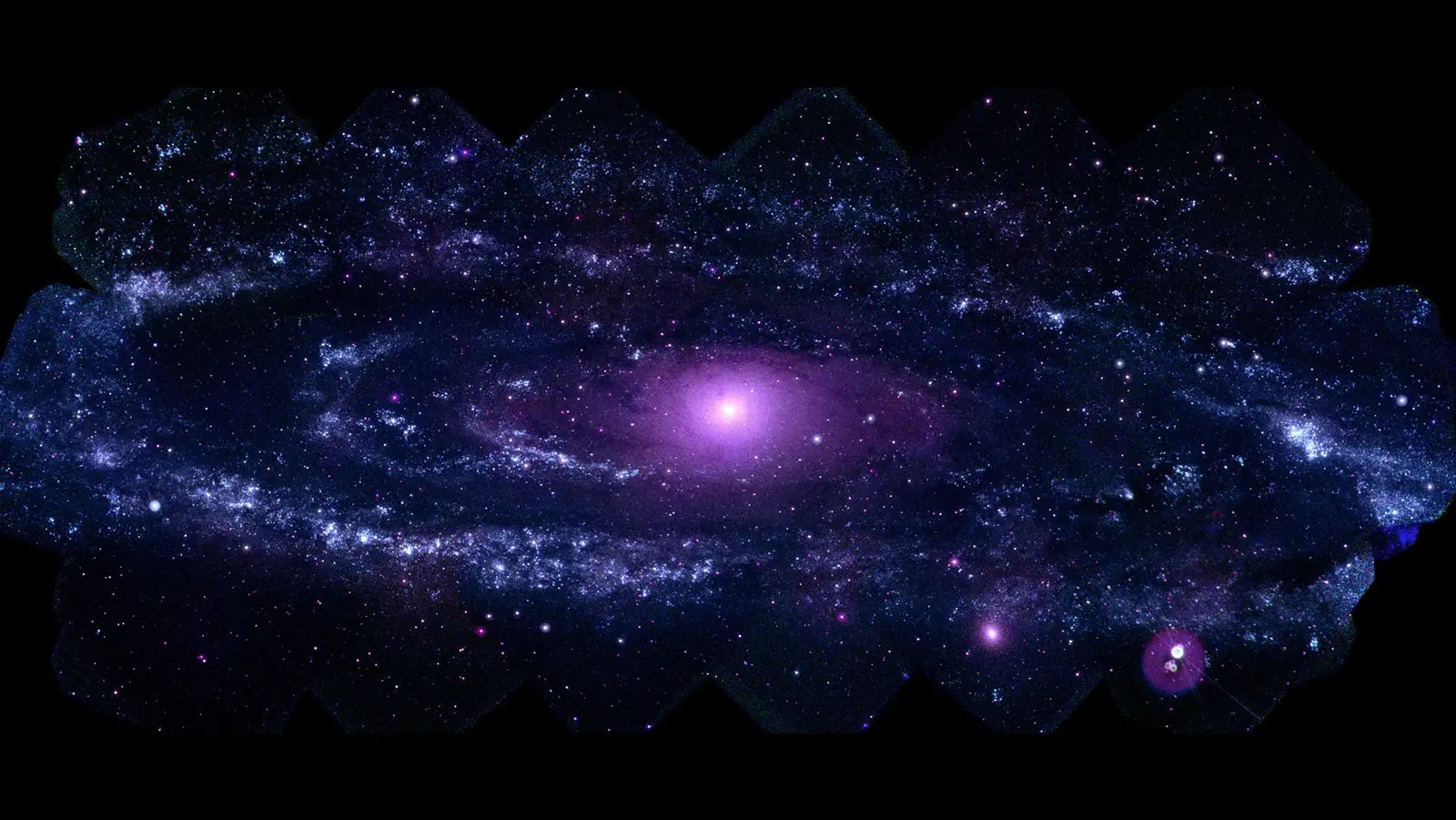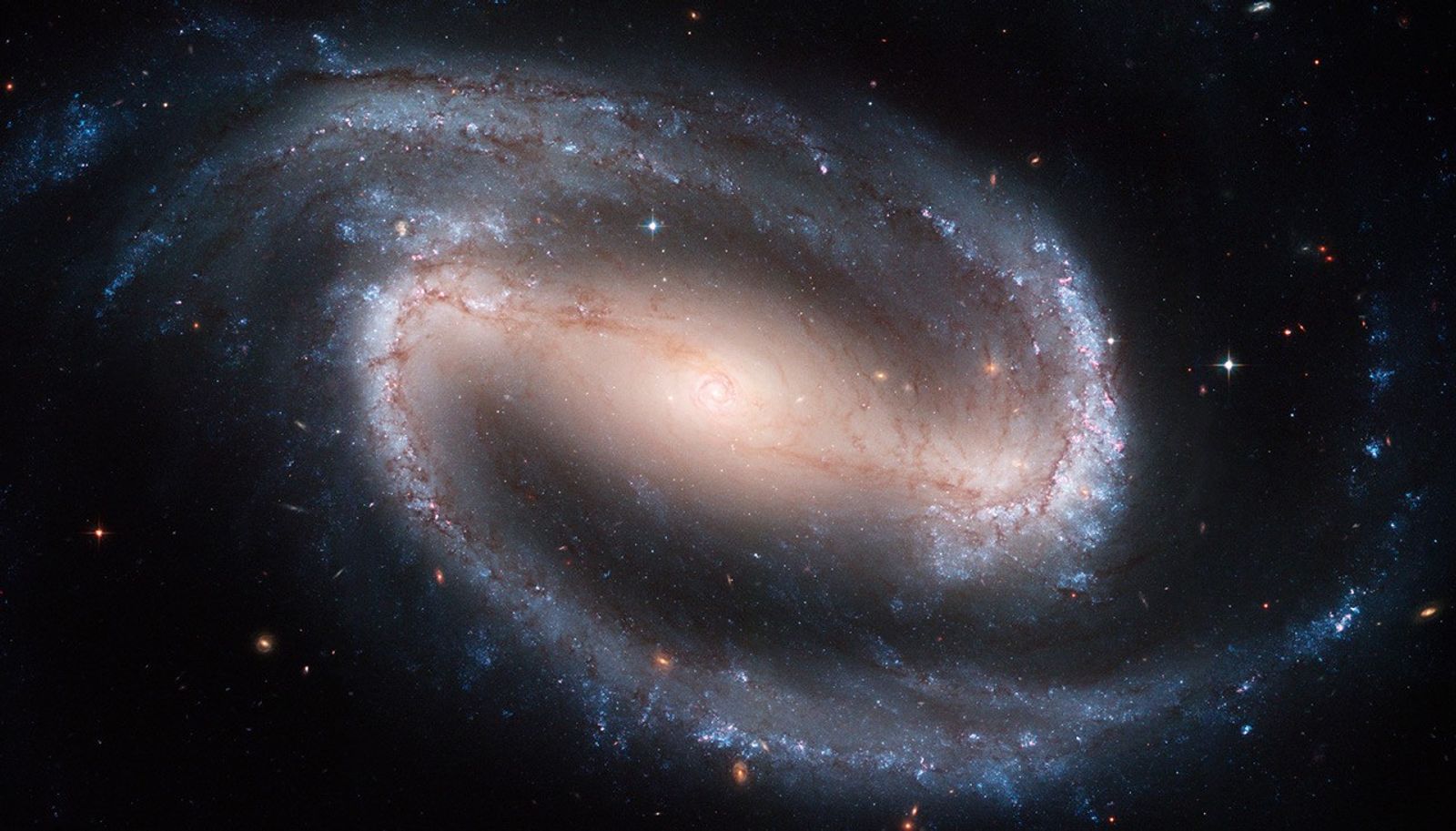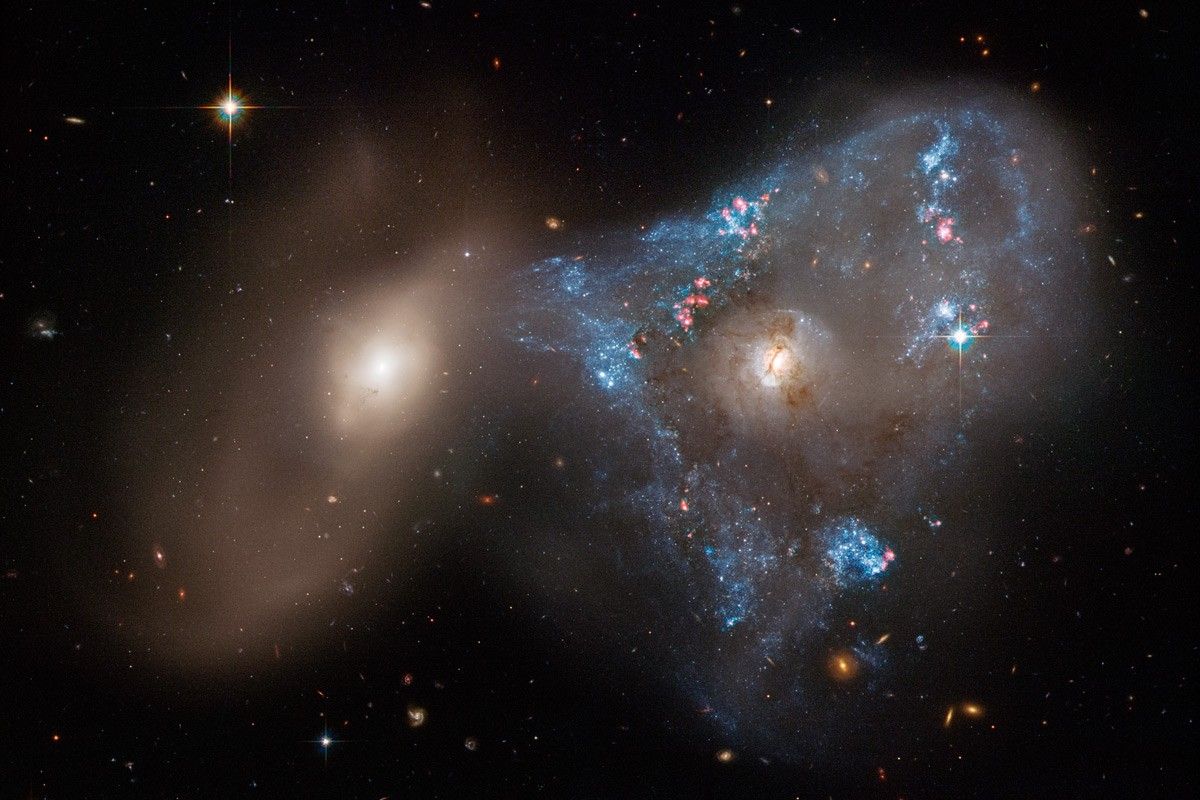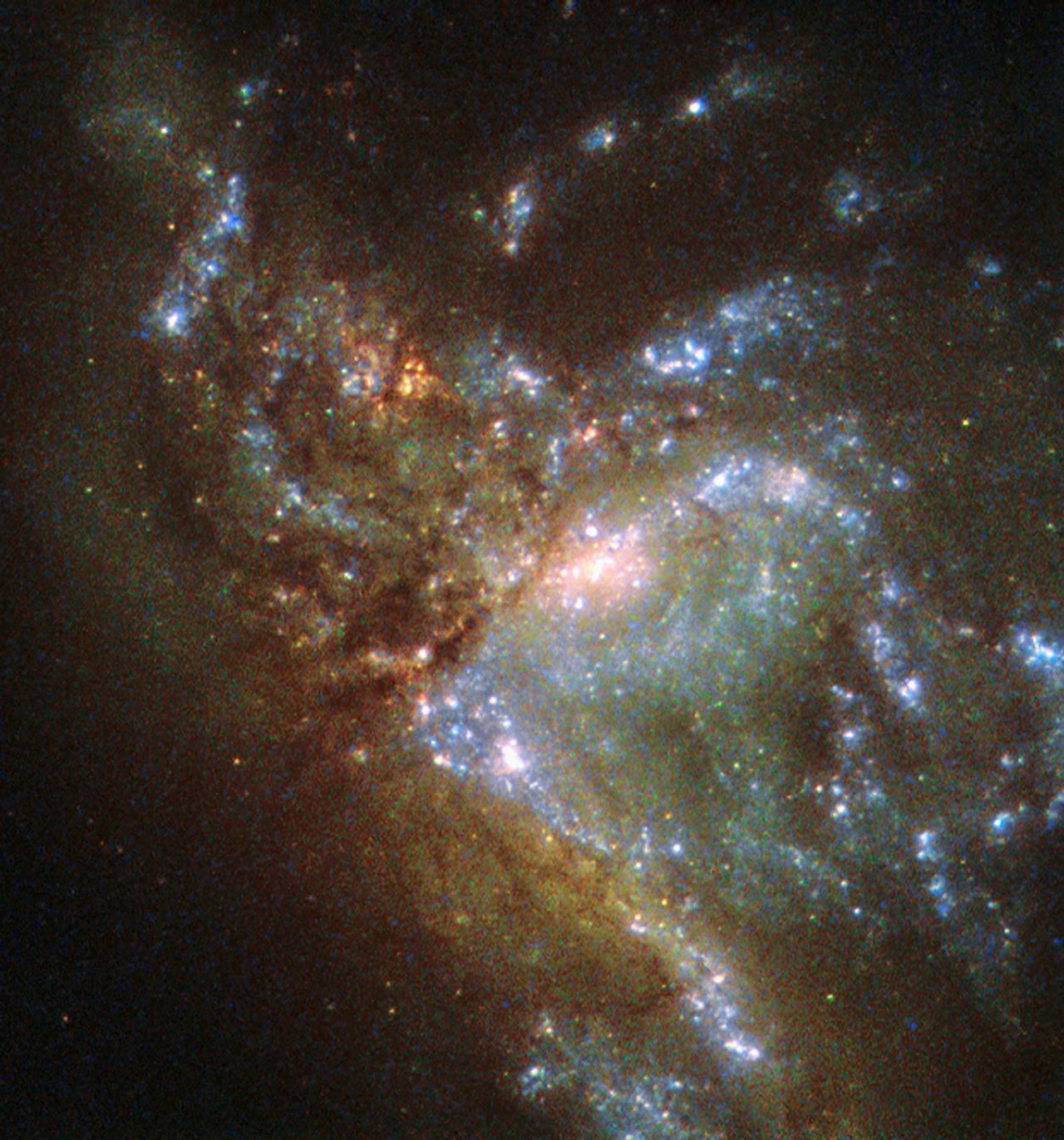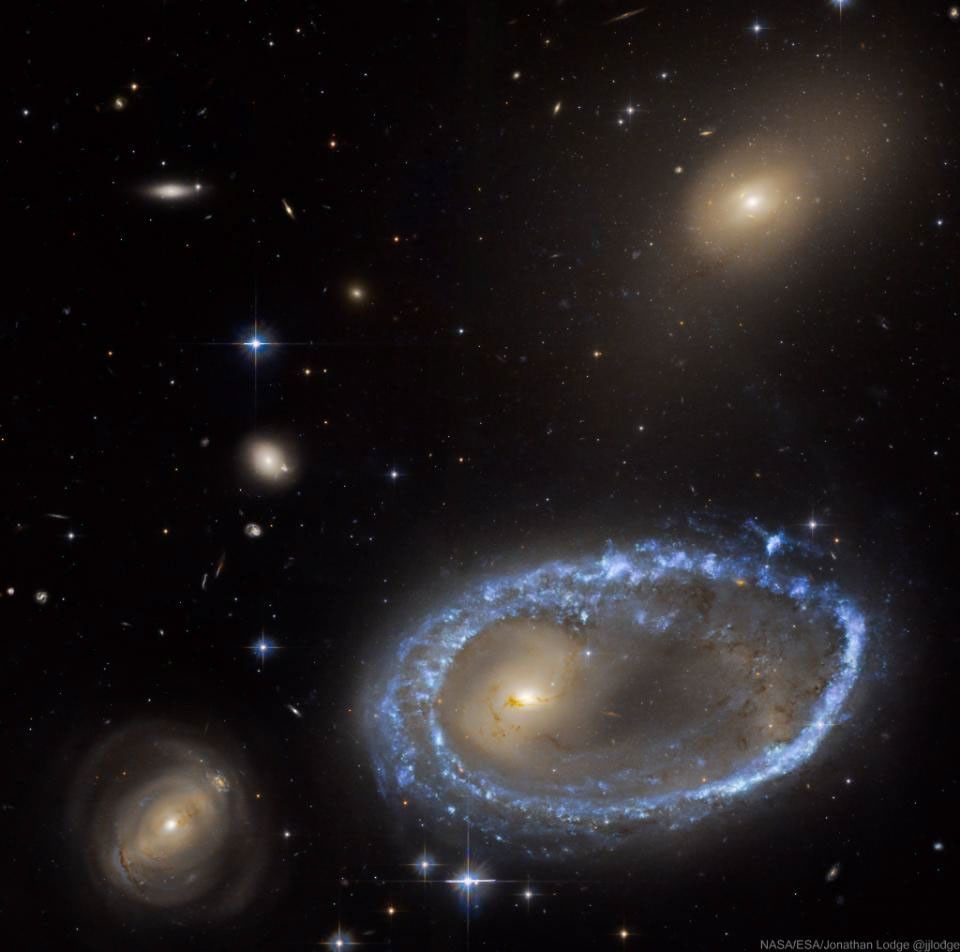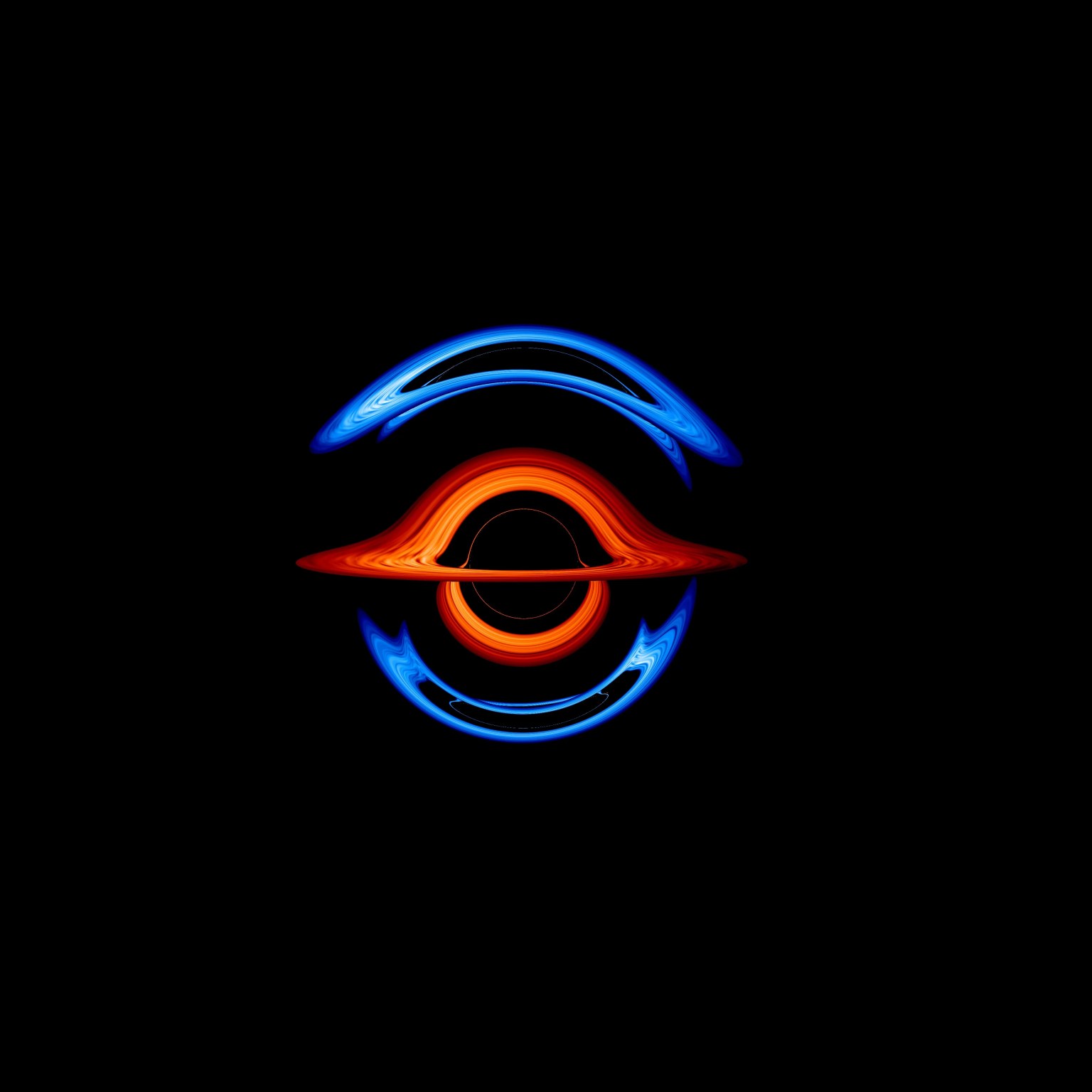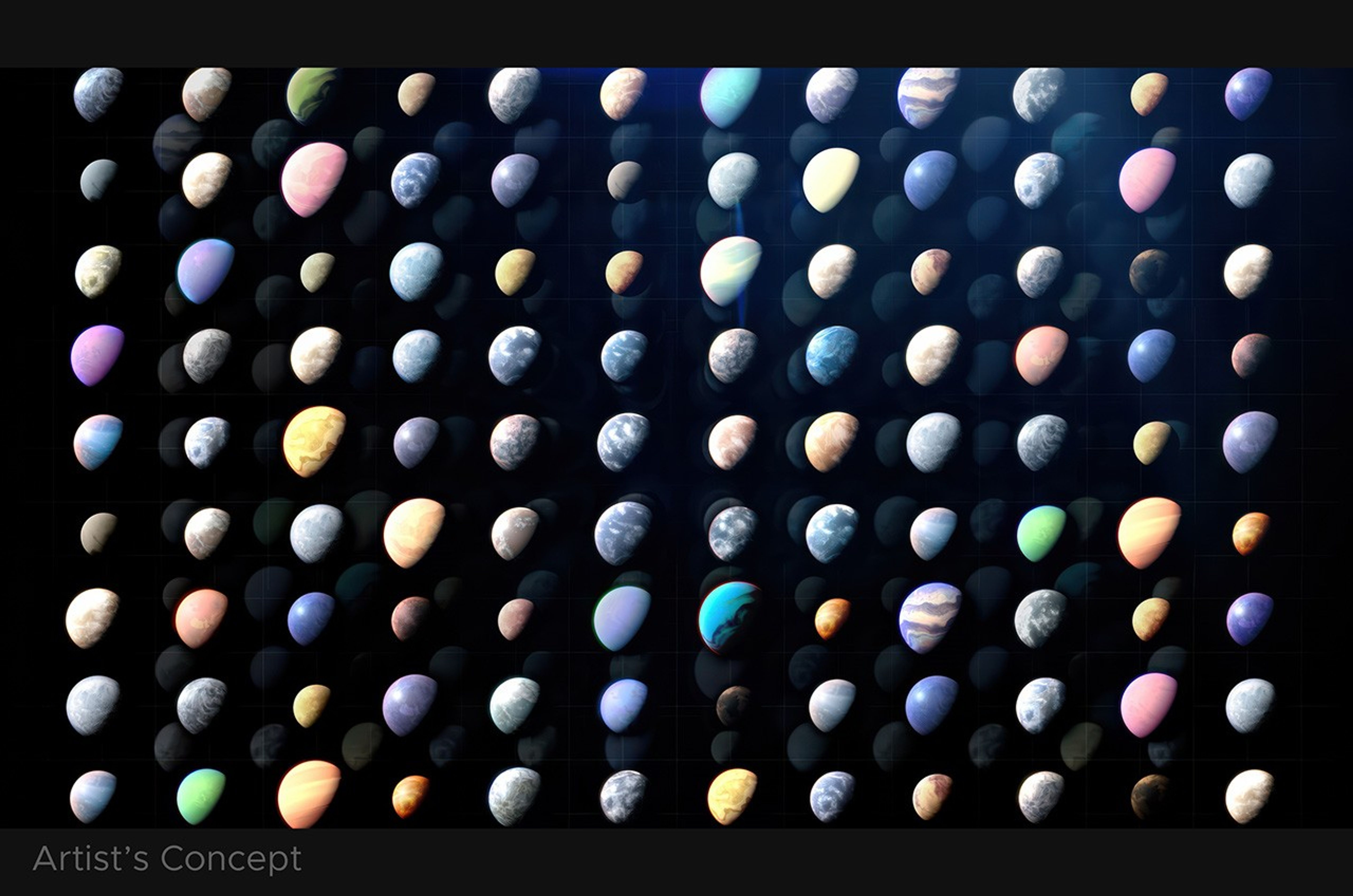Galaxy Evolution
In 2004, NASA released the Hubble Ultra Deep Field. This image of a small part of the constellation Fornax contains around 10,000 galaxies, some of which existed 13 billion years ago, less than 800 million years after the big bang. Snapshots like these allow scientists to study galaxies at different evolutionary stages. It’s a bit like taking a picture of all the people in New York City’s Times Square and using it to study human aging, since it would show examples of people of all ages. But even with all our modern observatories, astronomers still have many questions about exactly how galaxies begin and grow.

Formation
Astronomers know that some of the oldest galaxies observed formed when the universe was only about a billion years old. They think those galaxies started to grow around pockets of space that were slightly denser than their surroundings, an effect created by cosmic inflation when the universe began. But when it comes to the exact order of formation, they have a little bit of a “chicken or the egg” problem.
Most big galaxies have supermassive black holes at their centers that pack hundreds of thousands to billions of times the Sun’s mass. A black hole weighing 4 million Suns sits in the center of our own galaxy, the Milky Way. It’s possible that the black holes came first, and galaxies grew around them. Or perhaps the galaxies came first, and small black holes within them merged and fed on gas, dust, and stars, eventually becoming the monsters they are today. Exploring this question is a major goal for NASA’s James Webb Space Telescope.
Spiral Galaxy Bars
Many older spiral galaxies develop a central band-like structure of stars called a bar. In these galaxies, called barred spirals, this feature connects to the arms rather than the nucleus itself. Scientists think stellar bars are temporary structures that form when stars, gas, and dust at the base of spiral arms build up to make a denser region that favors star formation.
Collisions
Sometimes, galaxies collide. This doesn’t necessarily mean their stars crash – galaxies contain a lot of empty space – but collisions can compress gas clouds, spurring new bouts of star formation. Each galaxy deforms in reaction to the gravitational pull of its partner. Astronomers think the Milky Way and its galactic neighbor Andromeda are set to collide in another 4.5 billion years.
Mergers
If colliding galaxies don’t have enough momentum to move past each other, they can merge to form a single larger galaxy. A merged galaxy can look very different from the two that created it. For example, if a spiral and elliptical merge, the result could be an irregular galaxy.
If a large galaxy merges with a smaller one, gravitational ripples can disturb both, throwing gas, dust, and stars outward. The result can be a ring of material at the edge of the new galaxy that is full of the material needed to form new stars – a ring galaxy. While some material is thrown outward, other material can stream toward the core and fuel the galaxy’s central black hole, resulting in an active galactic nucleus.
Scientists see evidence of galaxy mergers all across the cosmos, and since most big galaxies contain supermassive black holes at their centers, it stands to reason their black holes should merge too. Astronomers don’t exactly know what that kind of event should look like, but they’re actively trying to find out.
Galactic Cannibalism
Larger galaxies can also gobble up smaller ones through proximity and gravitational interactions, pulling material away to fuel their own growth. Researchers think the Milky Way is currently funneling away a stream of hydrogen from its satellite dwarf galaxies, the Large and Small Magellanic Clouds.




























